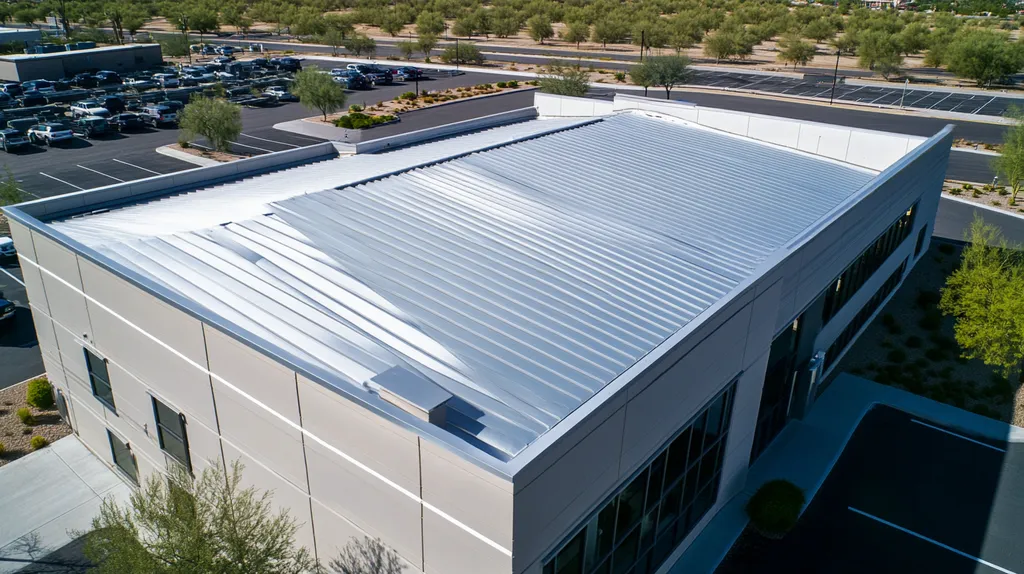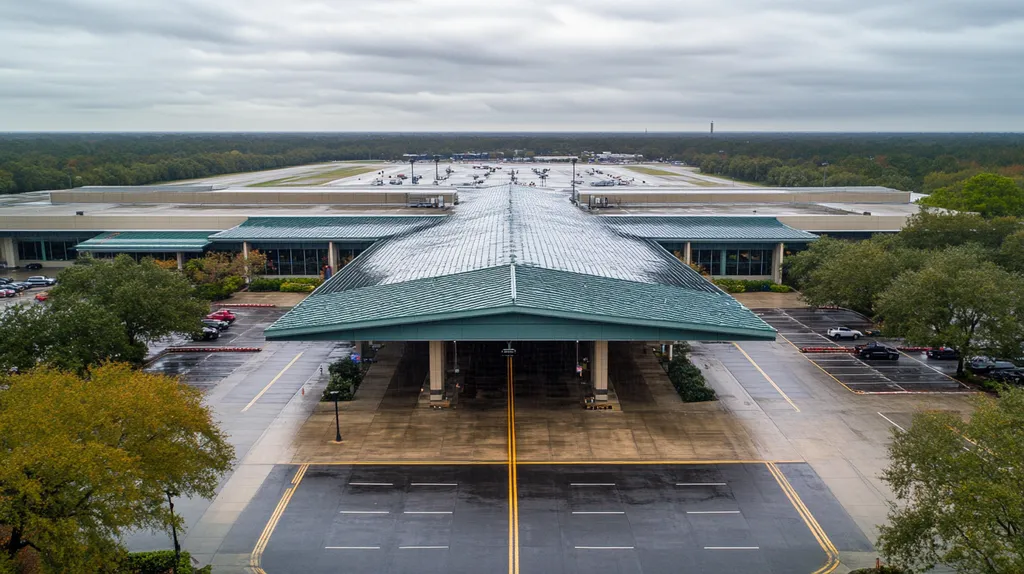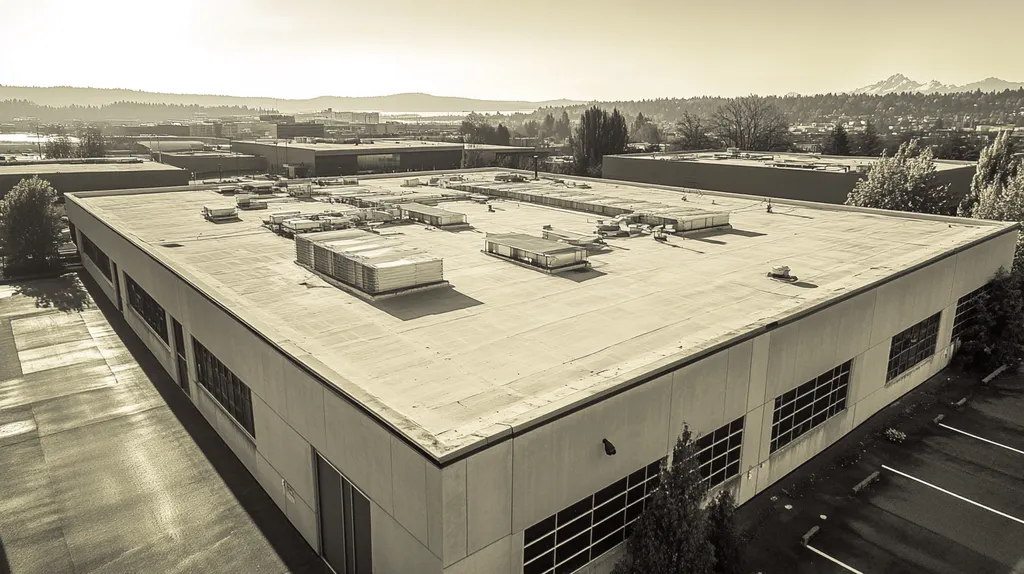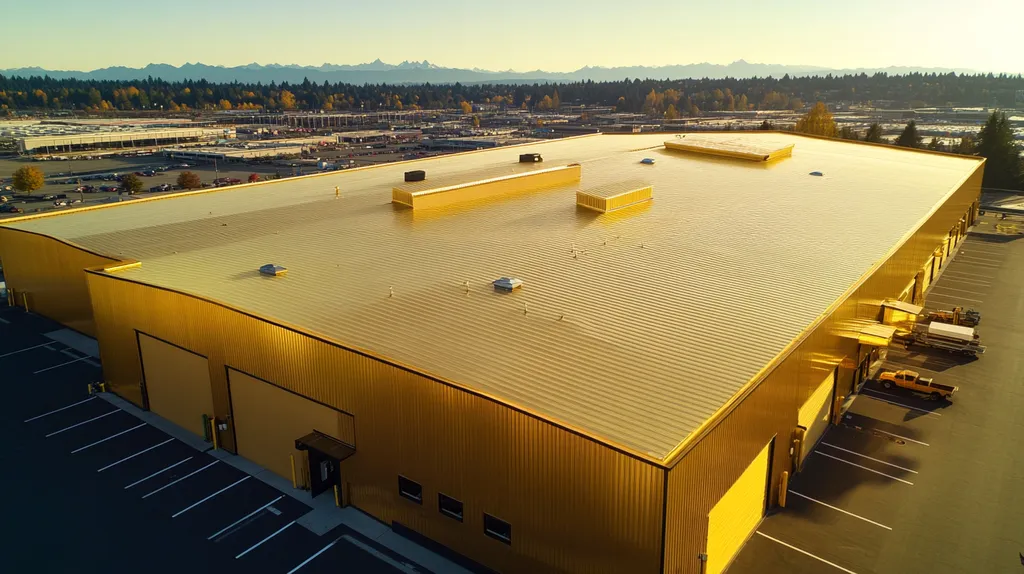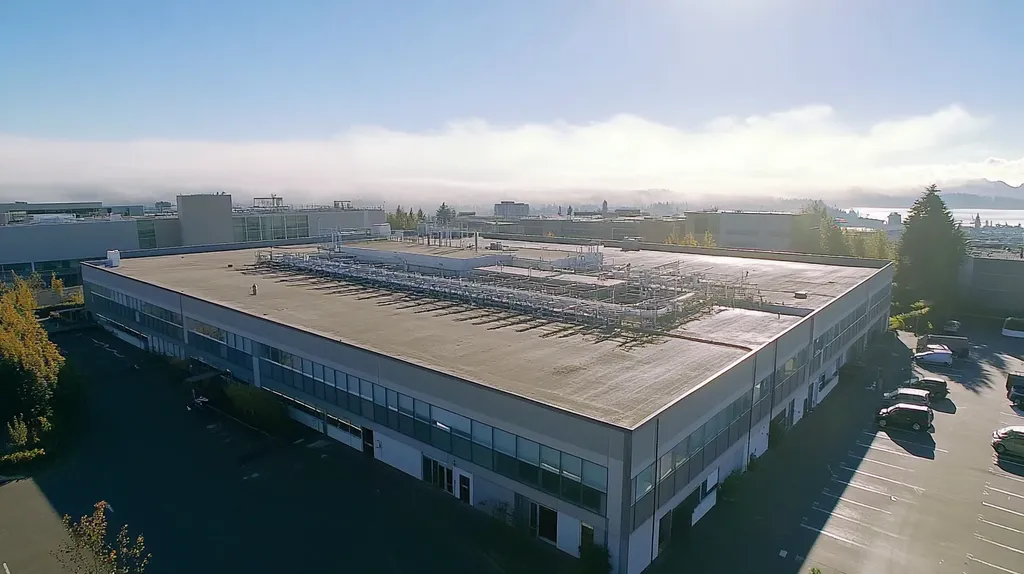Welcome to today’s Battle Royale featuring two roofing heavyweights: “Pressure Washing” in the east corner versus “Chemical Cleaning” in the west!
Tonight’s showdown pits these contenders against each other across six punishing rounds designed to test every aspect of their performance for Industrial Roof Coating Cleaning Methods.
At stake? Millions in potential costs, decades of building protection, and the critical performance demands of modern commercial and industrial facilities.
Our professional judging panel will evaluate each round on technical merit, real-world performance, and value delivery. After all six rounds, we’ll declare our ultimate champion.
Ladies and gentlemen, facility managers and building owners… it’s time to rumble!
ROUND 1: INITIAL COSTS & INSTALLATION
Industrial roof coating maintenance represents a critical investment for facility managers, with improper cleaning methods potentially leading to premature coating failure and expensive repairs. The selection between pressure washing and chemical cleaning impacts not just immediate costs, but long-term roof performance and facility operations. Understanding these implications helps stakeholders make informed decisions that protect their roofing investments.
Material Expenses
Industrial roof coatings require regular maintenance and inspection to maintain their protective qualities. Annual inspections and maintenance protocols are essential for detecting surface deterioration before it leads to major issues. (source: Performance Roof Systems)
Pressure washing equipment represents a significant upfront investment but offers reusability across multiple cleaning cycles. The primary costs include the washing unit, appropriate nozzles, and water usage, with minimal ongoing material expenses.
Chemical cleaning requires continuous investment in specialized cleaning agents, protective equipment, and application tools. These recurring material costs can accumulate significantly over time, especially when dealing with large industrial surfaces.
Considering the long-term material investment requirements, pressure washing earns an “ADVANTAGE” in this category.
Installation Complexity
Installation complexity directly influences labor requirements and potential risks during the cleaning process. Proper execution ensures coating longevity while minimizing the possibility of damage to the roof surface.
Pressure washing follows a straightforward process that requires minimal setup and preparation. Technicians can typically complete the cleaning with standard safety protocols and basic training, reducing the likelihood of application errors.
Chemical cleaning demands extensive preparation, including proper mixing ratios, application sequences, and neutralization procedures. The process requires specialized training and careful monitoring throughout the application phase.
Given its simpler execution requirements, pressure washing claims another clear “ADVANTAGE” in installation complexity.
Project Timeline
Project duration significantly impacts facility operations and overall maintenance scheduling. Efficient cleaning processes minimize disruption to daily business activities while maintaining roof coating integrity.
Pressure washing typically requires minimal setup time and allows for immediate inspection of results. The process can often be completed in a single phase, with surfaces ready for use shortly after cleaning.
Chemical cleaning involves multiple stages, including application, dwell time, and neutralization. Weather conditions can further extend project timelines, as chemical treatments often require specific temperature and humidity ranges.
Due to its efficient completion time and minimal weather dependencies, pressure washing secures an “ADVANTAGE” in project timeline considerations.
ROUND 1 WINNER: PRESSURE WASHING
ROUND 2: DURABILITY & LIFESPAN
Industrial roof coating durability directly impacts facility protection and maintenance costs. Studies show that improper cleaning methods can reduce a roof coating’s lifespan by up to 40%, leading to premature replacement and increased facility disruption. Understanding how different cleaning approaches affect coating longevity helps facility managers make decisions that protect their roofing investments.
Surface Impact
The interaction between cleaning methods and coating surfaces fundamentally affects system longevity. Proper surface maintenance preserves protective properties while preventing degradation that leads to costly repairs.
Pressure washing’s forceful nature can create microscopic fissures in coating surfaces, potentially compromising their protective barrier. These small damages often become entry points for moisture and contaminants, accelerating coating breakdown.
Chemical cleaning offers gentler surface treatment that maintains coating integrity while effectively removing containments. The specialized cleaning agents can be tailored to specific coating types, ensuring optimal cleaning without compromising surface protection.
Given its coating-friendly approach, chemical cleaning earns an “ADVANTAGE” in surface impact.
Material Compatibility
Different roof coating materials respond uniquely to cleaning methods. Understanding these interactions helps prevent inadvertent damage during maintenance procedures.
Pressure washing presents compatibility challenges across various coating types. The high-pressure water jets can be particularly damaging to elastomeric and acrylic coatings, potentially reducing their effectiveness.
Chemical cleaning systems use specially formulated solutions that work harmoniously with most coating materials. Soft washing techniques ensure thorough cleaning while preserving coating integrity across different material types. (source: Referred Roof Cleaning)
Chemical cleaning claims another clear “ADVANTAGE” in material compatibility.
Long-term Performance
The chosen cleaning method significantly influences coating performance over time. Regular maintenance should enhance rather than compromise the coating’s protective capabilities.
Pressure washing can create cumulative stress on coating systems. Repeated high-pressure cleaning may lead to progressive deterioration, even when damage isn’t immediately visible.
Chemical cleaning maintains coating integrity while providing consistent cleaning results. This gentler approach helps preserve the coating’s protective properties, contributing to extended service life.
Chemical cleaning secures an “ADVANTAGE” in long-term performance considerations.
ROUND 2 WINNER: Chemical Cleaning
ROUND 3: PERFORMANCE FACTORS
Performance factors in industrial roof coating maintenance can make the difference between a coating that lasts its full intended lifespan and one that fails prematurely. The wrong cleaning approach can compromise coating integrity, leading to costly repairs and potential damage to facility operations. Understanding how different cleaning methods perform across key metrics helps facility managers protect their roofing investments while maintaining operational efficiency.
Efficiency of Cleaning
The effectiveness of cleaning methods directly impacts maintenance schedules and coating longevity. Regular maintenance intervals must balance thorough cleaning with minimal disruption to facility operations.
Pressure washing delivers immediate visual results through forceful debris removal. However, this method may struggle with biological growth and embedded contaminants that require repeated treatments.
Chemical cleaning provides deeper penetration into the coating surface, effectively breaking down stubborn contaminants and preventing rapid recontamination. The chemical action continues working even after the initial application, creating longer-lasting results.
For comprehensive cleaning effectiveness, chemical cleaning earns an “ADVANTAGE” in this category.
Environmental Impact
The environmental implications of cleaning methods extend beyond immediate facility concerns to impact surrounding ecosystems and water resources. Responsible maintenance practices must consider both immediate and long-term environmental effects.
Pressure washing consumes significant water resources and can create uncontrolled runoff that carries contaminants into surrounding areas. The high-pressure spray may also dislodge coating particles that contribute to environmental pollution.
Chemical cleaning methods can be carefully controlled to minimize environmental impact. Modern eco-friendly formulations provide effective cleaning while reducing water consumption and controlling chemical dispersion.
Due to its more controlled application and reduced resource consumption, chemical cleaning claims an “ADVANTAGE” in environmental impact.
Safety Considerations
Safety represents a critical factor in roofing maintenance operations. Proper cleaning methods must protect both workers and facility occupants while maintaining coating integrity.
Pressure washing creates significant slip hazards and requires workers to manage high-pressure equipment at elevation. The force of the spray can also cause physical harm if not properly controlled.
Chemical cleaning allows for more controlled application with reduced physical risks to workers. While proper PPE and handling procedures are essential, the overall risk profile is lower than high-pressure alternatives. (source: Five Points Roofing)
Given its reduced physical hazards and controlled application process, chemical cleaning secures an “ADVANTAGE” in safety considerations.
ROUND 3 WINNER: Chemical Cleaning
ROUND 4: MAINTENANCE REQUIREMENTS
Industrial roof coating maintenance demands careful attention to both immediate and long-term requirements. Poor maintenance choices can lead to accelerated coating degradation, reduced energy efficiency, and potentially catastrophic roof failures. The selection between pressure washing and chemical cleaning impacts not just the cleaning effectiveness, but also the overall health and longevity of the roofing system.
Frequency Requirements
Pressure washing typically requires more frequent applications due to its mechanical nature. The high-pressure cleaning process can actually accelerate the accumulation of new debris by creating microscopic surface irregularities that trap contaminants.
Chemical cleaning systems generally require less frequent application cycles. The chemical agents continue working after application, creating a protective barrier that actively resists new contamination and biological growth.
Due to its longer-lasting results and reduced application needs, chemical cleaning earns an “ADVANTAGE” in frequency requirements.
Repair Integration
An elastomeric roof coating can cover small cracks and seams, but it won’t fix a leaky roof. The existing roofing system must be repaired before applying a coating. (source: RestoreMasters)
Pressure washing can make identifying repair needs more challenging by potentially masking underlying issues. The forceful water application may temporarily seal leaks or create new paths for water infiltration.
Chemical cleaning allows for better inspection and repair integration. The gentler cleaning process helps maintain coating integrity while making it easier to spot areas requiring attention.
Chemical cleaning claims another “ADVANTAGE” in repair integration considerations.
Resource Management
Pressure washing requires significant water resources and specialized equipment maintenance. The process demands continuous monitoring of pressure settings and nozzle conditions to prevent damage.
Chemical cleaning uses fewer resources overall and requires minimal equipment maintenance. Solution mixing can be precisely controlled to match specific cleaning needs while minimizing waste.
With its efficient resource utilization and reduced equipment demands, chemical cleaning secures an “ADVANTAGE” in resource management.
ROUND 4 WINNER: CHEMICAL CLEANING
ROUND 5: SUSTAINABILITY CREDENTIALS
Sustainability credentials have become a critical factor in industrial roofing maintenance decisions, with increasing regulatory pressure and stakeholder demands for environmentally responsible practices. Poor choices in cleaning methods can lead to excessive water waste, chemical runoff contamination, and premature material degradation that creates additional environmental burden through frequent replacements.
Water Usage
Water conservation represents a growing concern in industrial maintenance, with responsible usage becoming both an environmental imperative and operational requirement. Efficient cleaning methods must balance effectiveness with resource stewardship.
Pressure washing typically consumes significant water volumes, often requiring 3-4 gallons per minute during operation. The high-volume usage creates substantial runoff that must be contained and properly managed.
Chemical cleaning systems utilize targeted application methods that significantly reduce water consumption. Modern formulations require minimal rinsing, often achieving desired results with 60-70% less water than pressure washing.
Given its superior water efficiency, chemical cleaning earns an “ADVANTAGE” in this category.
Chemical Impact
Environmental safety has become paramount in industrial cleaning operations. The choice of cleaning method directly affects local ecosystems through runoff and atmospheric releases.
Pressure washing relies primarily on mechanical action, minimizing the introduction of cleaning agents into the environment. When detergents are required, they can be selected from environmentally certified options.
Chemical cleaning methods, while effective, introduce specialized cleaning agents into the environment. Even with modern eco-friendly formulations, these chemicals require careful handling and disposal protocols.
Due to its reduced chemical footprint, pressure washing claims an “ADVANTAGE” in environmental impact.
Lasting Effect on Materials
Industrial roof cleaning can involve significant health and safety risks, requiring trained crews and specialized equipment for both pressure washing and chemical cleaning methods. The cleaning method’s impact on material longevity directly affects replacement frequency and resource consumption. (source: The Roof Cleaning Experts)
Pressure washing’s aggressive mechanical action can accelerate coating wear, potentially reducing material lifespan. This premature degradation leads to more frequent replacements and increased material waste.
Chemical cleaning provides gentler surface treatment that preserves coating integrity while maintaining cleanliness. The controlled application helps extend material lifespan, reducing replacement frequency and associated environmental impacts.
For its superior material preservation, chemical cleaning secures an “ADVANTAGE” in this category.
ROUND 5 WINNER: CHEMICAL CLEANING
ROUND 6: SPECIALIZED APPLICATIONS
The specialized applications of industrial roof coating cleaning methods demand careful consideration, as improper selection can lead to catastrophic system failures. Studies indicate that up to 30% of premature roof coating failures stem from using incompatible cleaning methods for specific applications. Understanding these nuances helps facility managers protect their investments while maintaining optimal performance.
Material Sensitivity Response
Different roof coating materials exhibit unique sensitivities that directly impact cleaning method effectiveness. The interaction between cleaning processes and coating chemistry fundamentally affects both immediate results and long-term performance.
Pressure washing provides effective cleaning for robust coating systems but can potentially damage sensitive or aged materials. The mechanical force may create micro-fractures in elastomeric coatings or degrade adhesion in areas with existing wear.
Chemical cleaning offers precise control over the cleaning process through specialized formulations matched to specific coating types. This targeted approach helps preserve coating integrity while effectively removing contaminants.
Given its adaptability to various coating sensitivities, chemical cleaning claims an “ADVANTAGE” in this category.
Complex Surface Geometries
Industrial roofs often feature complex geometrical configurations that challenge traditional cleaning approaches. These intricate layouts include multiple penetrations, varying slopes, and detailed flashings that require thorough maintenance.
Pressure washing struggles with consistent coverage across complex surfaces. The direct spray pattern may miss recessed areas or create uneven cleaning results around obstacles.
Chemical cleaning provides superior coverage through its ability to flow into and around complex architectural features. The chemical action continues working in hard-to-reach areas, ensuring comprehensive cleaning results.
Based on its superior handling of complex geometries, chemical cleaning earns an “ADVANTAGE” in this category.
Climate Response Factors
Regional climate variations significantly impact cleaning method effectiveness. Temperature extremes, humidity levels, and local environmental conditions all influence the success of maintenance procedures. (source: Five Points Roofing)
Pressure washing performance varies significantly with temperature changes. Cold weather can create ice hazards, while hot conditions may cause rapid evaporation that reduces cleaning effectiveness.
Chemical cleaning systems can be formulated to perform optimally across various climate conditions. Advanced solutions maintain effectiveness through temperature fluctuations while providing consistent results.
For its adaptability to different climate conditions, chemical cleaning secures an “ADVANTAGE” in this category.
ROUND 6 WINNER: CHEMICAL CLEANING
AND THE WINNER IS…
After six grueling rounds of technical evaluation, we have our verdict, ladies and gentlemen!
With a commanding five rounds to one victory, CHEMICAL CLEANING emerges as our undisputed champion in the Industrial Roof Coating Cleaning Methods showdown!
Chemical cleaning dominated the competition with superior performance in durability, maintenance efficiency, sustainability, and specialized applications. Its gentle yet effective approach, coupled with exceptional material compatibility and reduced resource consumption, proved decisive in this historic battle.
But don’t count pressure washing out completely! This veteran contender still packs a powerful punch when it comes to initial costs and straightforward applications. For facilities requiring basic cleaning with robust coating systems, pressure washing remains a viable contender.
However, we must emphasize that every facility enters the ring with unique characteristics. Local climate conditions, coating materials, and specific building requirements can all influence the final decision. While chemical cleaning claims the championship belt today, property managers should always consult qualified roofing professionals who can evaluate their specific situation before choosing a cleaning method.
Remember, champions: in the high-stakes arena of industrial roof maintenance, victory doesn’t just come from picking the top contender – it comes from matching your facility’s unique needs with the right cleaning strategy in your corner!
FREQUENTLY ASKED QUESTIONS
Q. What are the initial costs for commercial roof cleaning methods?
A. The initial costs for different cleaning methods vary significantly. Pressure washing usually requires a higher upfront investment in equipment but can be reused over time. In contrast, chemical cleaning has ongoing costs due to the need for specialized agents, which can add up, particularly for large surfaces.
Q. How do cleaning methods impact the durability of an industrial roof?
A. The durability of industrial roofs can be significantly affected by the chosen cleaning method. Aggressive pressure washing may create small fissures that allow moisture entry, leading to faster coat wear. Chemical cleaning, on the other hand, offers gentler options that preserve the integrity of the coating, extending its lifecycle and performance.
Q. Which cleaning method is better for long-term performance of commercial roofs?
A. Long-term performance is generally enhanced with chemical cleaning, which preserves the coating’s protective properties. This method minimizes cumulative stress on the materials over time, whereas pressure washing may lead to gradual degradation. The goal is to maintain surface integrity for optimal coating effectiveness.
Q. How often should chemical cleaning be applied to an industrial roof?
A. The frequency of chemical cleaning applications typically depends on the environmental conditions and the roof’s specific needs. Generally, it is less frequent than pressure washing, as the chemical agents actively resist contamination and growth. Consulting with a maintenance professional can help determine the ideal schedule for your building.
Q. How do environmental factors affect roof cleaning methods?
A. Environmental factors, such as temperature and humidity, can significantly impact the effectiveness of cleaning methods. Pressure washing may become less effective in cold weather, leading to hazards like ice. In contrast, chemical cleaning can be tailored to handle different climate conditions, ensuring consistent cleaning results year-round.
Q. Are there any safety concerns with commercial roof cleaning?
A. Yes, safety is a key concern in commercial roof cleaning. Pressure washing presents risks due to slip hazards and high-pressure equipment. On the other hand, chemical cleaning typically offers a lower risk profile, although proper use of personal protective equipment (PPE) is still essential to ensure worker safety during the process.
Q. What is the impact of roof cleaning on sustainability?
A. Sustainability should be a top priority in roof cleaning. Pressure washing often consumes excessive water and can lead to runoff issues. In contrast, chemical cleaning can be more water-efficient and environmentally conscious, using targeted applications that minimize chemical waste and support better resource management in industrial settings.

